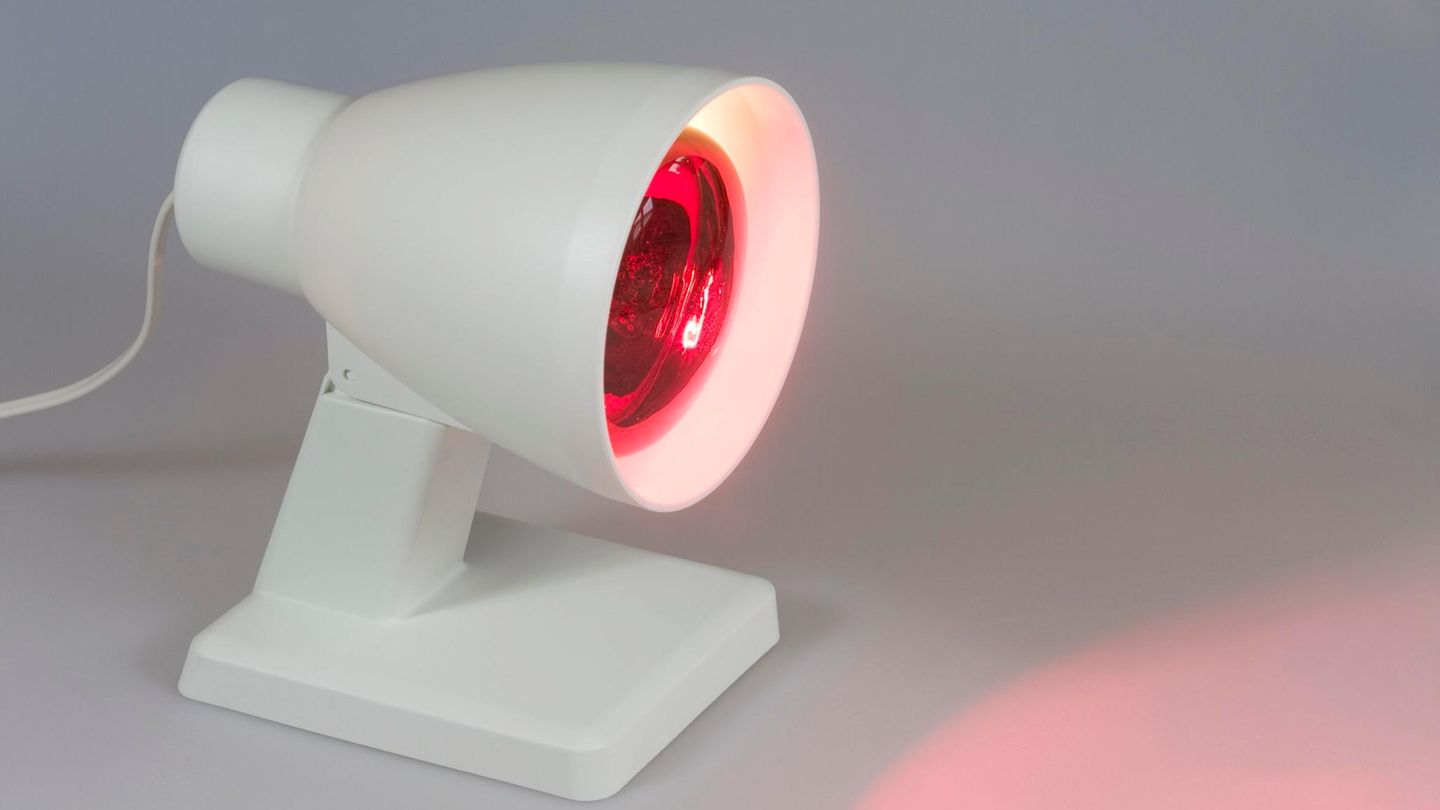fact or fallacy
Does red light help with a cold?
Copy the current link
The nose is closed, the eyes are watering, the throat hurts: Anyone who complains about typical cold symptoms is quickly recommended red light. But does it also help?
“Deep heat helps with a cold,” Grandma had already recommended and brought out the red light lamp. But who doesn’t know the inner doubts when you sit there bathed in red light for ten to fifteen minutes, your eyes closed, with enough time to think and ask yourself: Is this actually of any use?
First of all, the disappointment: Unfortunately, there is no evidence that it helps. This is also noted by the authors of, as sinusitis is called in technical language. However, there is “at least the theoretical possibility of positive effects”. This means: If the nose is inflamed and blocked and we are affected by cold viruses, heat can be helpful.
A red light radiates in the infrared range, which lies between visible light and microwaves that are invisible to the human eye. Infrared waves are not visible, the red light from the lamp comes from the coating and basically only signals that the lamp is burning. Infrared light is also known as deep heat. In fact, it does not penetrate deep into the body, as some might imagine, but only penetrates a few millimeters into the skin.
“Supposedly the red light heat is supposed to promote blood circulation,” says . This is supposed to be good for the immune system. But this effect has not yet been proven. Meyer admits that there is not much interest in conducting scientifically valuable and expensive studies on red light lamps for colds. The fact that the effect has not yet been demonstrated may simply be because of this and does not mean that red light does not help.
Some people like warmth, others like cold
“However, red light treatment has completely disappeared from practices,” says Meyer. Ten to fifteen years ago, red light or shortwave therapy was standard for inflamed sinuses. “No doctor does that anymore.” Meyer therefore suspects that the heat treatment is more of a placebo effect. Anyone who takes out the red light lamp feels like they are doing something about their cold. And anyone who also finds warmth to be beneficial against a cold may also benefit.
“But that depends on the individual,” says the ENT doctor. Because the body temperature fluctuates when you have a cold: Some people feel cold and so they hide under the blanket with a hot water bottle. The other person sweats while his body fights the viruses – so he finds cold calf wraps pleasant.
“Ultimately, the effect of red light is a heat effect,” says Meyer. Anyone who feels that the treatment is doing them good can sit in front of the lamp. “Used correctly, it usually has no disadvantages,” says the ENT doctor. However, you shouldn’t put too much faith in the big promises made by manufacturers – such as that the nose will be clearer after the treatment and that stuck mucus will be loosened by the infrared light. “That has not been proven,” says Meyer.
Red light: keep your distance, close your eyes
He would advise against red light, among other things, for acute middle ear infections. The heat could worsen the course of the disease. Anyone who suffers from severe cardiovascular problems or has ever had a stroke should also be careful. Meyer also advises restraint for small children under two years of age. “Children of this age are not yet good at communicating when things get too hot or the pain increases.” In addition, the most common reason for fever is a middle ear infection. “It’s better to have this clarified by a pediatrician.”
Basically, it is important to maintain a sufficient distance from the lamp. Although the radiation does not penetrate deeply into the skin, it can – if the distance is too close – cause burns, including on the eyes. These must therefore remain closed during treatment. “How far the distance should be and how long the treatment can last varies slightly from device to device and can be found in the operating instructions,” says Meyer.
The ENT doctor advises paying attention to the DIN number when buying a red light lamp. This at least ensures that it is a tested and approved medical product. If you take the old red light lamp out of the basement and are not sure whether it is still ready for use, you can go to a specialist shop and have it checked there. “If necessary, the bulb can be replaced,” says Meyer.
Conclusion:
Red light shortens colds and clears mucus from the nose? This has not been proven. Infrared radiation is ultimately heat. If you feel like this is good for you when you have a cold, you can just turn on the lamp. If used correctly, the treatment at least has no negative consequences. You should only be careful with middle ear infections, cardiovascular problems or small children.
The article was updated in January 2025.
Source: Stern
I’m Caroline, a journalist and author for 24 Hours Worlds. I specialize in health-related news and stories, bringing real-world impact to readers across the globe. With my experience in journalism and writing in both print and online formats, I strive to provide reliable information that resonates with audiences from all walks of life.




